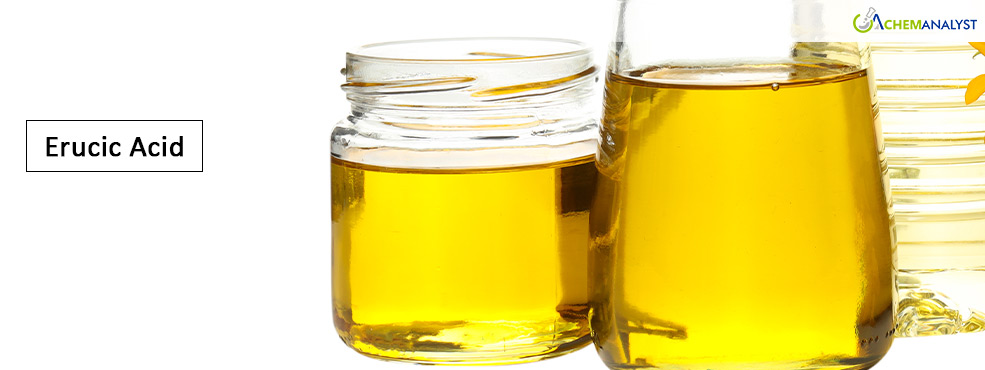Erucic Acid Consumption Grows While Production Faces Feedstock Shortage
- 06-Feb-2025 5:00 PM
- Journalist: Phoebe Cary
Erucic Acid demand is seen rising across the cosmetics and paints sectors, driven by global trends for natural, sustainable ingredients. In cosmetics, its use in premium skincare and haircare is increasing, especially as South Korean brands expand into international markets. In the paints sector, growth is fuelled by Asia's expansion and China's export surge. However, with rapeseed oil production facing challenges in Europe, supply pressures are expected to push Erucic Acid prices higher.
The demand for Erucic Acid in the cosmetics sector is rising, driven by the trend for natural, effective ingredients in skincare and haircare. Known for its moisturizing and skin-conditioning properties, Erucic Acid is increasingly used in premium products as consumers seek sustainable, plant-based solutions. With South Korean beauty brands like Amor Pacific and LG Household & Health Care expanding globally, particularly in markets like the U.S., Europe, and Asia, the consumption of Erucic Acid is expected to grow as part of the K-beauty industry's focus on natural ingredients.
Similarly, the paints and coatings sector has seen increased demand for Erucic Acid, driven by Asia's market expansion and China's rising export volumes. Strategic cost-cutting and realignment efforts within the sector have further influenced the demand.
The outlook for the Erucic Acid market in the cosmetics sector appears promising, driven by the rising demand for natural and sustainable ingredients. As global beauty brands, especially from South Korea, expand into key international markets, including the U.S., Europe, and Asia, the need for effective, eco-friendly ingredients like Erucic Acid is expected to increase. Erucic Acid’s moisturizing and skin-conditioning properties make it a desirable component in premium skincare and haircare products, aligning with the industry’s focus on clean beauty trends. With the growing global appeal of K-beauty products, the consumption of cosmetics is poised to see steady growth, supported by innovation and consumer preferences for plant-based solutions.
Concurrently, the Erucic Acid market in the paints and coatings sector is set to grow, driven by Asia's expanding market Strategic cost-cutting and realignment in the sector are boosting demand for raw materials like Erucic Acid. The ongoing focus on sustainability and eco-friendly paints further supports this upward trend.
The Erucic Acid production in the key exporter i.e., the European region remains intermediate as feedstock availability from rapeseed oil faces challenges. While rapeseed oil production in the EU has increased, driven by rising biofuel demand and a tightening palm oil supply, manufacturing production continues to contract. Germany expanded its rapeseed cultivation area to 1.1 million hectares in 2024, supporting higher production. However, rapeseed oil prices have experienced volatility due to supply shortages, competition with other oils, and ongoing biofuel demand, adding pressure to the market.
As demand for rapeseed oil grows due to biofuel commitments and sustainability trends, along with rapeseed production projected to decline in 2024-25, feedstock availability for Erucic Acid will be strained. This is expected to push Erucic Acid prices higher, driven by limited raw material supply and increased competition for resources.



